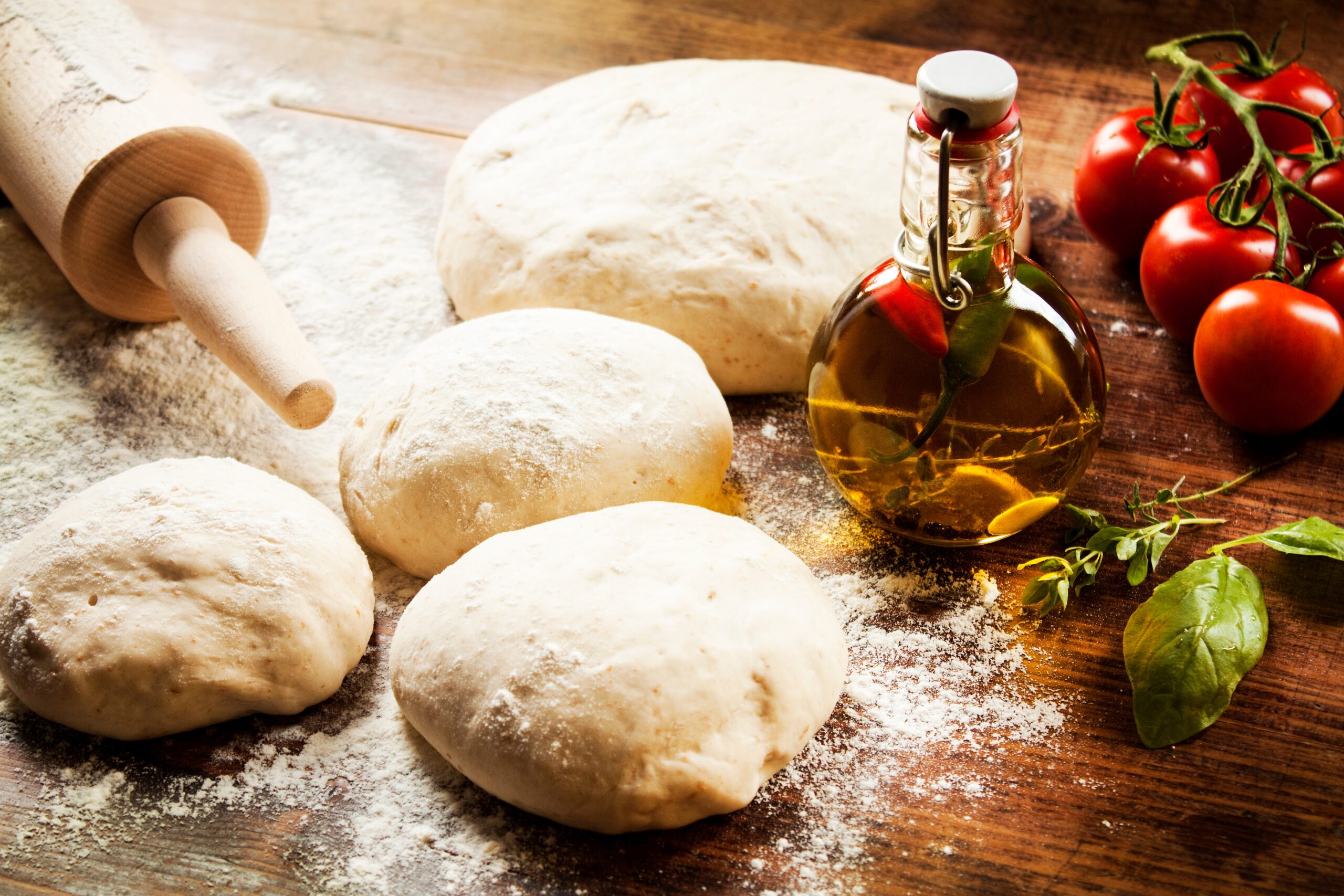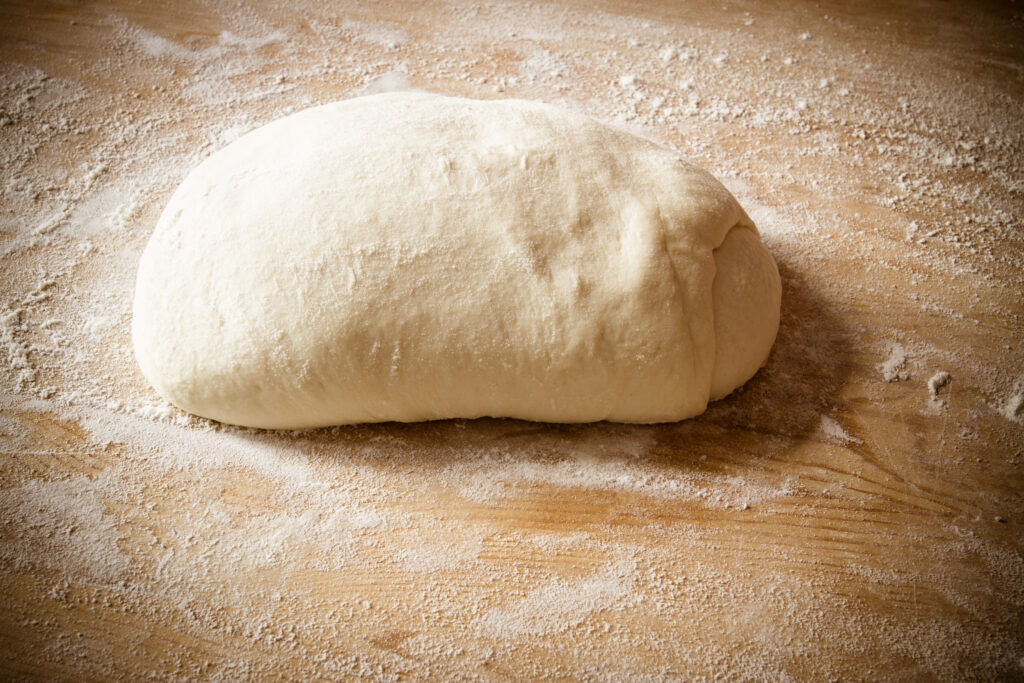Making pizza dough for a pizza oven can be a fun and rewarding experience. With the right recipe and technique, you can create a delicious crust that is crispy on the outside and chewy on the inside. Whether you are using a high-temperature tabletop pizza oven or a backyard grill, the process of making pizza dough is relatively simple and straightforward.
One of the most important aspects of making pizza dough is using the right ingredients. A basic pizza dough recipe typically calls for flour, yeast, salt, and water. However, some recipes may include additional ingredients such as sugar or olive oil. It is important to choose high-quality ingredients and follow the recipe closely to ensure that your dough turns out well. Additionally, it may be necessary to adjust the recipe depending on the type of pizza oven you are using. For example, a pizza oven that reaches high temperatures may require a dough recipe that is specifically formulated for high-temperature baking.
Overall, making pizza dough for a pizza oven is a fun and rewarding experience that requires a bit of patience and attention to detail. By using the right ingredients and following a good recipe, you can create a delicious crust that is sure to impress your family and friends.
Understanding Pizza Dough Basics
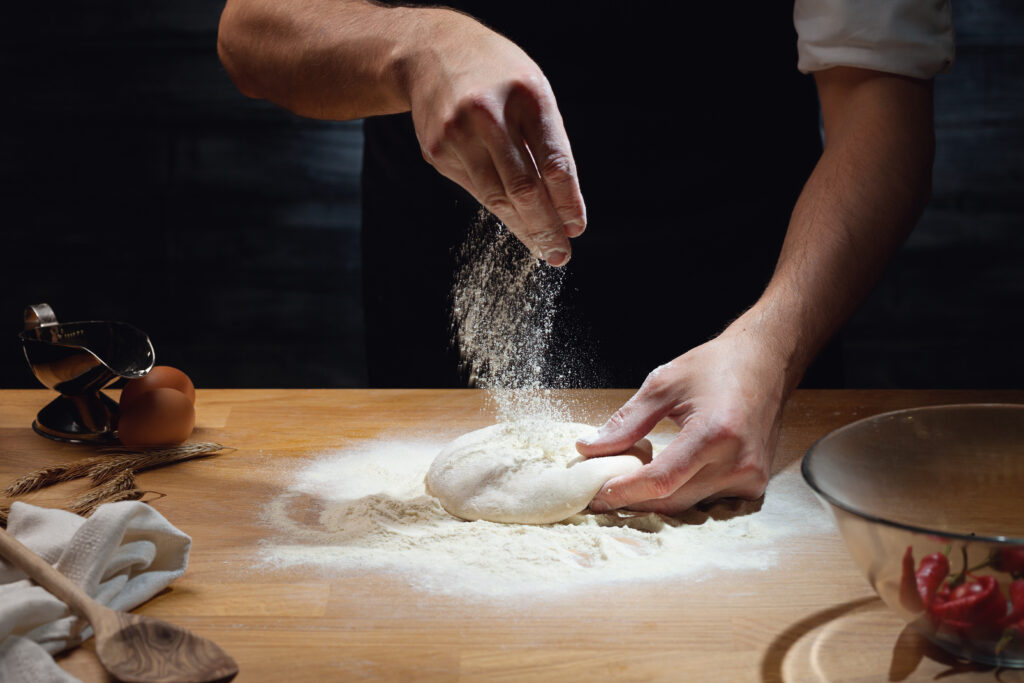
Making pizza dough for a pizza oven may seem like a daunting task, but it’s actually quite simple once you understand the basics. Here are a few things to keep in mind when making pizza dough:
Ingredients
The ingredients for pizza dough are simple and few. The main ingredients are flour, water, salt, and yeast. Some recipes may also call for sugar, olive oil, or other flavorings. It’s important to use high-quality ingredients, especially when it comes to the flour and yeast.
Hydration
The hydration level of your pizza dough will affect its texture and flavor. Hydration refers to the amount of water in relation to the amount of flour. A higher hydration level will result in a more moist and chewy dough, while a lower hydration level will result in a drier and crispier dough.
Kneading
Kneading is the process of working the dough to develop gluten, which gives the dough its elasticity and structure. Kneading can be done by hand or with a stand mixer. It’s important to knead the dough until it’s smooth and elastic, which usually takes about 10-15 minutes.
Proofing
Proofing is the process of letting the dough rise before baking. This allows the yeast to ferment and create carbon dioxide, which gives the dough its light and airy texture. Proofing time can vary depending on the recipe and the temperature of your kitchen, but generally takes about 1-2 hours.
By understanding these basic principles, you’ll be well on your way to making delicious pizza dough for your pizza oven.
Choosing the Right Ingredients
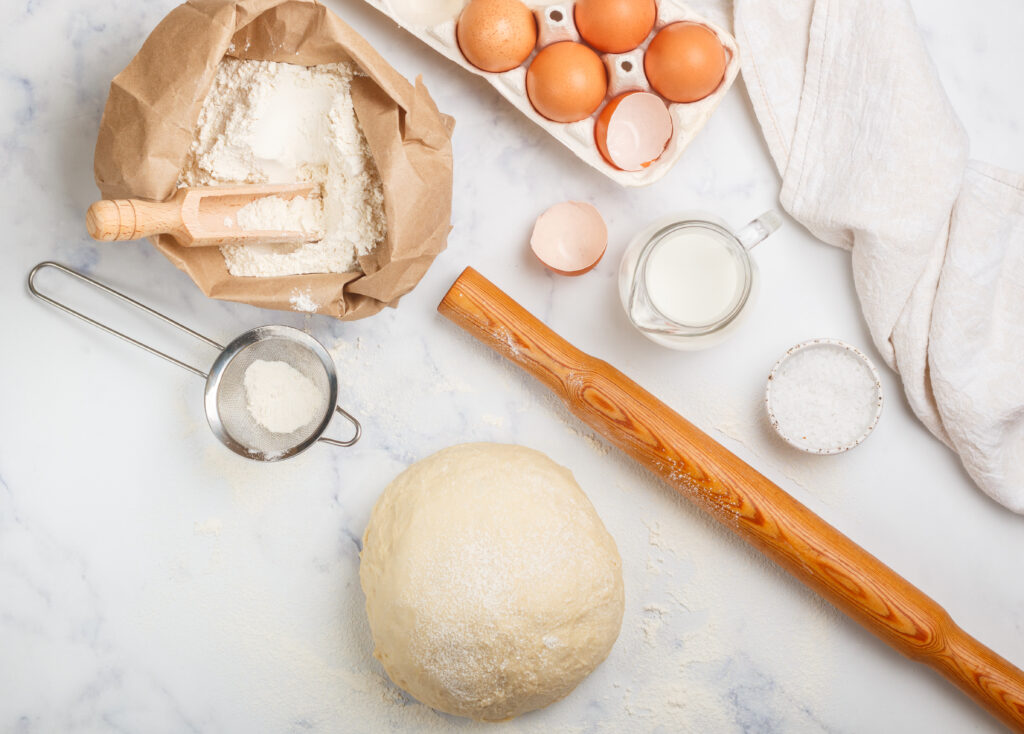
When it comes to making pizza dough for a pizza oven, the quality of the ingredients you use can make all the difference. Here are some key factors to consider when selecting your ingredients.
Flour Type
The type of flour you use will have a significant impact on the texture and flavor of your pizza crust. For a classic Neapolitan-style pizza, you’ll want to use a high-protein flour, such as “00” flour. This type of flour is finely ground and has a protein content of around 11-12%, which helps create a tender, chewy crust.
If you prefer a crispier crust, you can use a blend of “00” flour and all-purpose flour. All-purpose flour has a lower protein content, which will result in a crisper crust.
Yeast Selection
Yeast is what gives pizza dough its rise and airy texture. There are two main types of yeast: active dry yeast and instant yeast. Active dry yeast needs to be dissolved in water before use, while instant yeast can be added directly to the flour.
Instant yeast is the easiest to work with and is a great choice for beginners. It also tends to produce a faster rise, which can be helpful if you’re short on time.
Water Temperature
The temperature of the water you use to make your dough can also affect the final product. Ideally, you should use water that is around 100-110°F (38-43°C). Water that is too hot can kill the yeast, while water that is too cold can slow down the rise.
Salt and Sugar Role
Salt and sugar are both important ingredients in pizza dough. Salt helps enhance the flavor of the dough, while sugar can help feed the yeast and promote a faster rise.
When it comes to salt, you’ll want to use a fine-grain salt, such as sea salt or kosher salt. Avoid using table salt, as it can have additives that may affect the flavor of your dough.
For sugar, you can use either granulated sugar or honey. Just be sure to use it sparingly, as too much sugar can cause the dough to brown too quickly in the oven.
By paying attention to these key factors when selecting your ingredients, you can create a delicious pizza dough that is perfectly suited for your pizza oven.
Step by Step Dough Making
Making pizza dough from scratch is easier than you might think. With a few simple ingredients and some basic techniques, you can make delicious pizza dough that will be the perfect base for your favorite toppings. Here is a step-by-step guide to making pizza dough for your pizza oven.
Mixing the Ingredients
To make pizza dough, you will need flour, yeast, water, salt, and olive oil. Start by mixing the flour, yeast, and salt in a large bowl. Then, add the water and olive oil and mix until the dough comes together. You can use a stand mixer with a dough hook attachment to make this process easier, or you can mix the dough by hand.
Kneading the Dough
Once the dough has come together, it’s time to knead it. Kneading the dough helps to develop the gluten, which gives the dough its elasticity and helps it rise. To knead the dough, turn it out onto a lightly floured surface and use your hands to push and fold the dough. Knead the dough for about 10 minutes, or until it is smooth and elastic.
Dough Fermentation
After kneading, the dough needs to ferment. This allows the yeast to work its magic and create air pockets in the dough, which will help it rise and become light and airy. To ferment the dough, place it in a lightly oiled bowl and cover it with a clean towel or plastic wrap. Let the dough rise in a warm, draft-free place for at least an hour, or until it has doubled in size.
Shaping the Dough
Once the dough has fermented, it’s time to shape it. Turn the dough out onto a lightly floured surface and use your hands to shape it into a ball. Then, use your hands or a rolling pin to flatten the dough into a circle. You can also use a pizza dough press to shape the dough. Once the dough is shaped, add your favorite toppings and bake in your pizza oven.
That’s it! With these simple steps, you can make delicious pizza dough for your pizza oven. Experiment with different types of flour and toppings to find your perfect pizza.
Adapting Dough for Pizza Oven
When making pizza dough for a pizza oven, it’s important to make some adjustments to ensure the dough can withstand the high temperatures and short baking times. Here are some tips for adapting dough for a pizza oven.
Temperature Adjustments
Pizza ovens typically reach much higher temperatures than home ovens, often between 800-900°F (427-482°C). To adapt your dough for a pizza oven, consider making the following temperature adjustments:
- Use less sugar: Sugar can slow down browning and prevent burning, which is not ideal for a pizza oven. Consider reducing the amount of sugar in your dough recipe or eliminating it altogether.
- Use less oil: Like sugar, oil can also slow down browning and prevent burning. Consider reducing the amount of oil in your dough recipe or eliminating it altogether.
- Use cold water: When making your dough, use cold water to prevent the dough from overheating during mixing. This will help the dough maintain its structure and texture during the high-temperature baking process.
Baking Time
In a pizza oven, pizzas typically bake for only a few minutes. To ensure your dough is adapted for this short baking time, consider making the following adjustments:
- Use less yeast: Using less yeast will slow down the rising process, which is important for a short baking time. Consider reducing the amount of yeast in your dough recipe.
- Use a high-protein flour: A high-protein flour, such as bread flour, will create a stronger gluten structure, which is important for a short baking time. Consider using a high-protein flour in your dough recipe.
- Roll the dough thinner: Thinner dough will bake faster, which is important for a short baking time. Consider rolling your dough thinner than you would for a home oven.
By making these adjustments, you can adapt your dough for a pizza oven and ensure a delicious, crispy crust.
Common Mistakes to Avoid
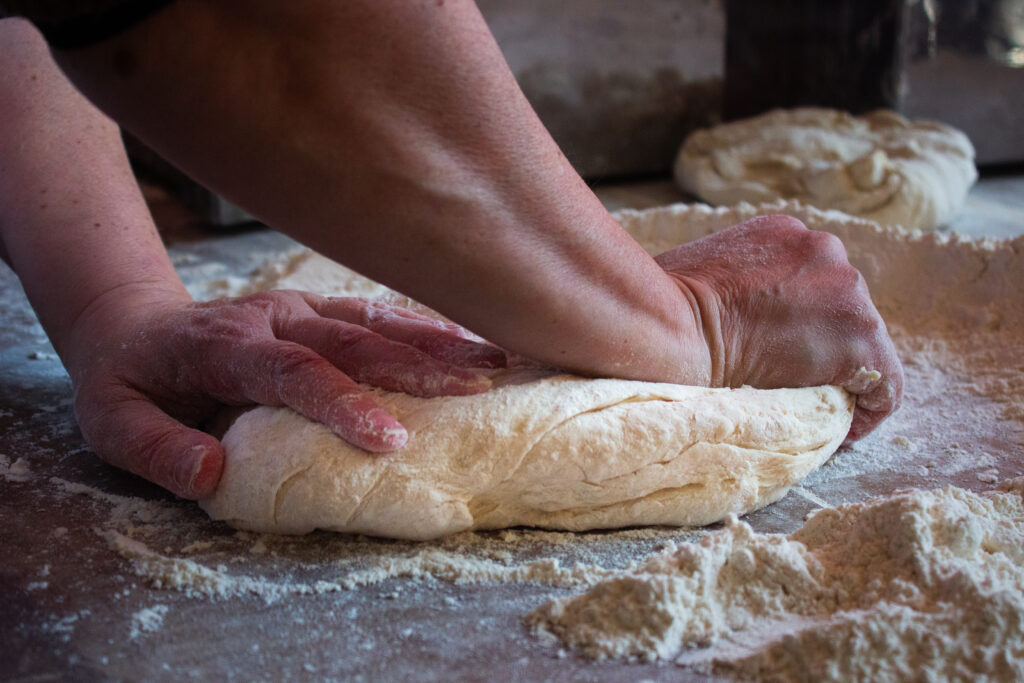
When making pizza dough for a pizza oven, there are some common mistakes that can ruin your pizza. Here are some of the most common mistakes to avoid:
Over-kneading
Over-kneading the dough can lead to a tough and chewy crust. It’s important to knead the dough just enough to develop the gluten, which gives the dough its elasticity and structure. Over-kneading the dough can break down the gluten, resulting in a tough and chewy crust.
To avoid over-kneading, use a timer or watch the dough carefully. Stop kneading when the dough is smooth and elastic, but still slightly tacky to the touch. This usually takes about 10 minutes of kneading by hand or 5 minutes in a stand mixer.
Incorrect Yeast Amount
Using too much or too little yeast can affect the texture and flavor of the dough. Too much yeast can cause the dough to rise too quickly, resulting in a dough that is difficult to work with and has a yeasty flavor. Too little yeast can result in a dense and heavy crust.
To avoid incorrect yeast amount, use a kitchen scale to measure the yeast accurately. The general rule of thumb is to use 1/4 teaspoon of yeast for every cup of flour. However, this can vary depending on the recipe and the ambient temperature. If the recipe calls for a specific amount of yeast, follow it exactly.
Skipping Fermentation
Fermentation is a crucial step in making pizza dough. It allows the dough to develop flavor and texture. Skipping fermentation can result in a dough that is bland and lacks structure.
To avoid skipping fermentation, plan ahead and make the dough at least 24 hours before you plan to bake it. This allows the dough to ferment slowly in the refrigerator, developing flavor and texture. If you’re short on time, you can also use a warm fermentation method, which allows the dough to rise quickly at room temperature.
By avoiding these common mistakes, you can make delicious pizza dough for your pizza oven. Remember to knead the dough just enough, measure the yeast accurately, and allow time for fermentation.
Frequently Asked Questions
Can I Use All-Purpose Flour?
Yes, you can use all-purpose flour to make pizza dough for a pizza oven. However, keep in mind that all-purpose flour has a lower protein content than bread flour, which means that your dough may not rise as much and may not have as much structure. If you want a chewier, more structured crust, you may want to consider using bread flour instead.
How Long Should I Ferment the Dough?
The length of time you should ferment your pizza dough depends on a few factors, including the temperature of your kitchen and the type of yeast you use. In general, you should ferment your dough for at least 24 hours in the refrigerator to develop flavor and texture. If you’re using commercial yeast, you can let the dough ferment for up to 48 hours. If you’re using a sourdough starter, you may need to ferment the dough for up to 72 hours to fully develop the sourdough flavor.
What If My Dough Doesn’t Rise?
If your pizza dough doesn’t rise, there could be a few reasons why. First, make sure that your yeast is fresh and active. If your yeast is old or dead, it won’t be able to leaven your dough. Second, make sure that you’re using warm water to activate your yeast, but not too hot, which can kill the yeast. Finally, make sure that you’re giving your dough enough time to rise. If your kitchen is cold, you may need to let your dough rise for longer than the recipe suggests.







